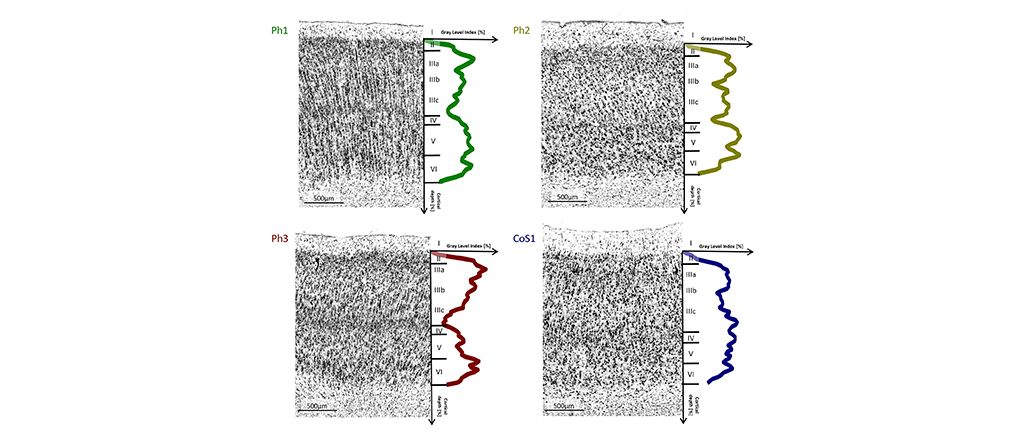Probabilistic maps of four new brain areas now accessible on EBRAINS

The four newly identified areas differ in their microstructural organisation. © Stenger et al. Brain Struct Funct (2022)
A research team from Heinrich-Heine-University Düsseldorf and Forschungszentrum Jülich has identified four new areas in a region of the human brain that is known to be involved in processing visual–spatial information and episodic memory and showed that differences in their microarchitecture correlate with differences in their distinct functions.
The researchers analyzed the cytoarchitecture of ten postmortem human brains and generated probabilistic maps that reflect the interindividual variability in size and localisation of the areas. The areas showed distinct structural features (see picture). The team then compared the localisation of the four new areas with data from functional neuroimaging studies. They found a correlation between the cytoarchitectonic differences and distinct functions in visual-spatial orientation and associative memory.
The probabilistic maps of the four new areas are provided as a freely available resource as part of the Julich Brain Atlas on the EBRAINS research infrastructure.